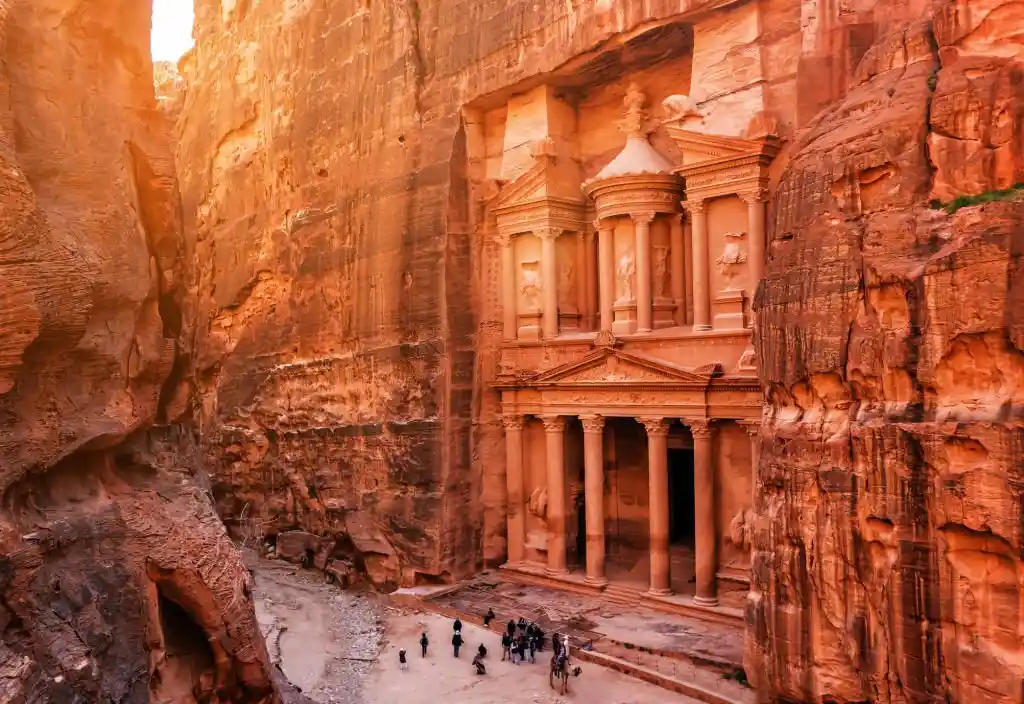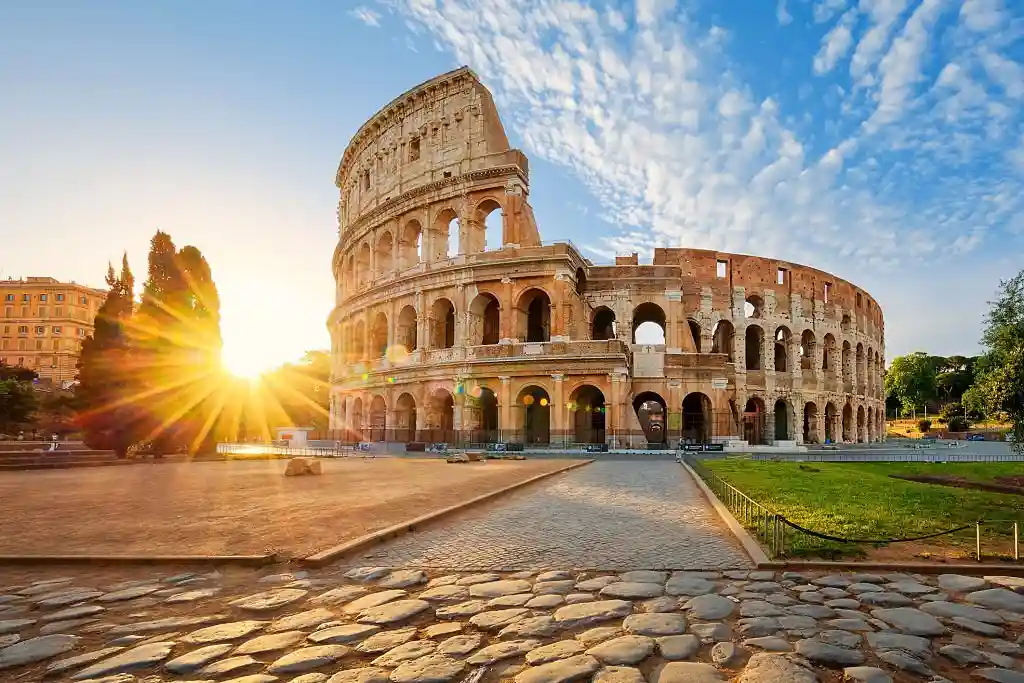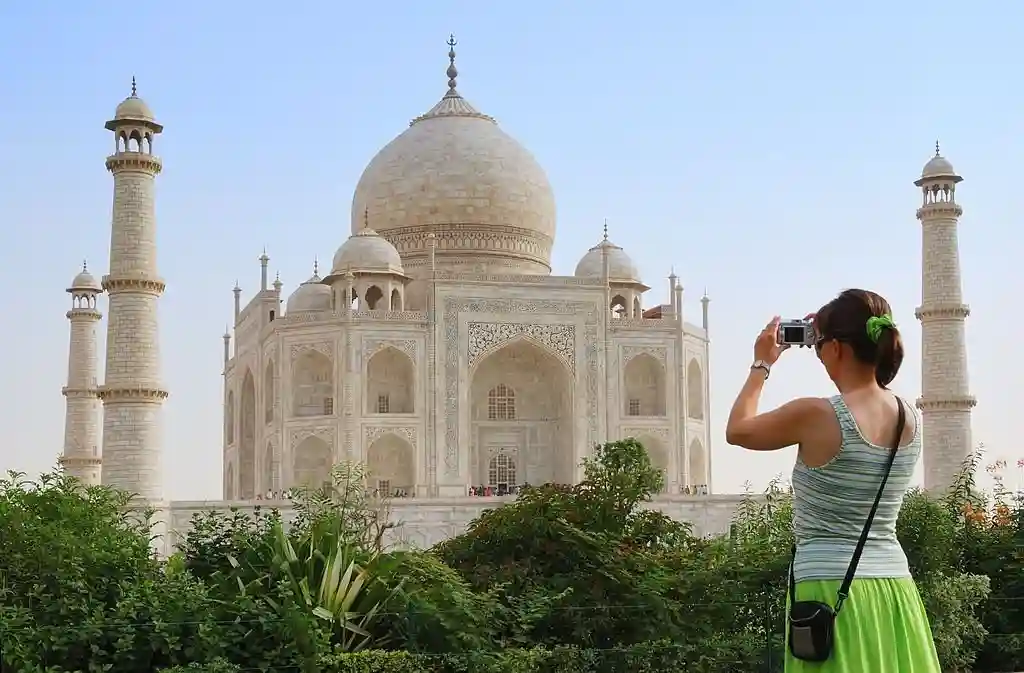Time-Travel Checklist: 15 Historical Landmark Every History Buff Should Visit!
Are you ready to go aboard on a thrilling journey through time? Join us as we unlock the secrets of the world’s most captivating historical landmarks. These ancient sites are not just places; they are living chapters of history, each holding a unique cultural significance. As we explore these UNESCO World Heritage sites, we’ll delve into the importance of preserving our heritage. Furthermore, the unparalleled joy of experiencing history firsthand.
1. Machu Picchu: Lost City of the Incas
Nestled amidst the stunning landscapes of southern Peru, Machu Picchu, is among best historical landmarks. It stands as a testament to the brilliance of the Inca civilization. This UNESCO World Heritage site summons explorers with its awe-inspiring beauty and the echoes of a past era.

Machu Picchu’s allure lies not just in its architectural marvel but also in the enigma that surrounds its purpose. Many theories have emerged about why the Incas built this city high in the Andes. Was it a royal estate, a religious retreat, or a fortress? As you explore the well-preserved stone structures. You can’t help but wonder about the daily lives of the people who once inhabited this place.
Efforts to preserve Machu Picchu are crucial to ensure that future generations can experience its majesty. Conservationists work tirelessly to protect the site from the wear and tear of tourism, and visitor numbers are carefully regulated. Sustainable tourism practices are also encouraged, with visitors asked to respect the site’s historical and environmental significance.
2. Tikal: Mayan Marvel in Guatemala
Deep within the heart of Tikal National Park in Guatemala, the ancient city of Tikal emerges from the lush jungle. Once a thriving center of the ancient Mayan civilization, Tikal offers a glimpse into their sophisticated society.

As you walk through the towering temples and plazas of Tikal, you won’t be able to help yourself but be transported back in time. The Mayans were known for their advanced knowledge and understanding of astronomy and mathematics, and Tikal’s architectural wonders are a proof to their expertise. The city was not only a hub of political and religious activities but also a lively urban center with a population that likely exceeded 90,000 at its peak.
Witnessing the sunrise at Tikal is a once-in-a-lifetime experience. As the first rays of sunlight pierce through the dense jungle canopy, the ancient city gradually lit up, and the calls of howler monkeys fill the air with the sound. It’s a moment that connects you with the Mayan people who once called this place home.
Preserving Tikal is not just about safeguarding its structures but also protecting the surrounding rainforest, which plays a vital role in the site’s ecosystem. Conservation efforts aim to strike a balance between allowing visitors to explore this cultural heritage site and maintaining its natural beauty.
3. The Pyramids at Giza: Egypt’s Mystical Wonders
The Pyramids at Giza have held humanity in awe for millennia. These colossal structures not only showcase architectural genius but also embody Egypt’s rich historical landmarks tapestry.

The Great Pyramid, in particular, continues to mystify researchers. Its perfect alignment with the cardinal points, precision in construction, and sheer size make it a marvel of ancient engineering. How did the ancient Egyptians achieve such feats without modern tools? The answers to these questions remain elusive, adding to the allure of the pyramids.
Preserving these iconic structures is an ongoing challenge. The pyramids have faced threats from natural disasters, urban expansion, and even theft. However, Egyptian authorities are dedicated to their historical landmarks preservation and employ advanced techniques to monitor and conserve these world-renowned monuments.
4. Angkor Wat: Cambodia’s Ancient Treasure
Cambodia’s Angkor Wat, with its sprawling temples and grandeur, stands as a testament to the once-mighty Khmer Empire. This archaeological wonder invites you to explore its intricate architecture and unravel the secrets of a bygone era.

Angkor Wat, often called the largest religious monument in the world, was originally constructed as a Hindu temple dedicated to Vishnu but later transformed into a Buddhist temple. The site’s layout mirrors the Hindu universe, with concentric galleries representing different realms.
Today, efforts to preserve Angkor Wat extend beyond its stone structures. Conservationists work to protect the intricate bas-reliefs that adorn the temple walls, depicting scenes from Hindu mythology and daily life during the Khmer Empire.
V. Petra: Carved into Jordan’s History
Hidden within the majestic canyons of Jordan lies Petra, a city sculpted into rose-red cliffs. This ancient city, lost to the world for centuries, has been rediscovered and now offers visitors a glimpse into its historical landmarks significance.

Petra’s stunning architectural marvels include the famous Al-Khazneh, or “The Treasury,” a breathtaking temple carved directly into the sandstone cliffs. The city was once a bustling hub of trade, and you can still see the remnants of its intricate water management system and the amphitheater where crowds gathered for various events.
Witnessing the magic of Petra’s cultural preservation is an experience like no other. The site’s historical importance is not just about the grand structures but also about the unique Nabatean culture that thrived here. As you explore the narrow Siq and emerge in front of The Treasury, you can’t help but feel transported to another time, discovering the allure of these old places.
6. Stonehenge: England’s Enigmatic Monument
Stonehenge, a puzzle that has perplexed generations, continues to captivate with its colossal stones and their mystical alignment. Dive into the enigma of Stonehenge and understand the importance of visitor restrictions aimed at preserving these iconic landmarks and the enigmatic allure of these historicals.

Stonehenge’s origins date back over 4,000 years, making it one of the oldest historical landmarks on our list. Yet, the purpose of this ancient stone circle remains shrouded in mystery. Was it an astronomical observatory, a religious site, or something else entirely? The questions persist, drawing researchers and visitors from around the world.
Preservation efforts at Stonehenge focus not only on the stones but also on the surrounding landscape. Conservationists work to protect the integrity of this UNESCO World Heritage site, ensuring that it continues to inspire wonder for generations to come.
7. The Colosseum and Forum: Rome’s Ancient Legacy
The Colosseum, where brave gladiators once clashed in epic battles, stands tall as a timeless symbol of ancient Rome’s magnificence. Let’s dive into the rich history of this iconic arena and uncover the hidden treasures of the Roman Forum. We’ll also unveil the captivating experiences offered by guided tours and explore the areas not accessible to all, adding layers of depth to your exploration of these historical marvels and world heritage sites.

The Colosseum, also renowned as the Flavian Amphitheatre, represents an extraordinary feat of ancient engineering and architectural brilliance. Imagine a structure that could accommodate up to 80,000 spectators, all gathering to witness the breathtaking spectacles of gladiator combat, thrilling chariot races, and a myriad of other captivating events. Today, it stands as a testament to the greatness of ancient Rome and the spectacles that once outspread within its walls. Adjacent to the Colosseum lies the Roman Forum, the heart of ancient Rome’s political, religious, and social life. Stroll among the ruins of temples, basilicas, and government buildings, and you’ll gain a deeper understanding of the city’s historical significance. Preservation efforts at the Colosseum and Forum aim to protect these invaluable remnants of the Roman Empire while allowing visitors to explore the depths of history.
8. The Parthenon: Athens’ Iconic Symbol
High atop the Acropolis, the Parthenon overlooks Athens with timeless grace. Explore the cultural significance of this magnificent temple and savor panoramic views of the ancient city. Your camera will thank you for this breathtaking experience as you uncover the historical architecture of Greece and its captivating world sites.

The Parthenon is a piece of classical architecture and serves as a symbol of ancient Athens. Dedicated to the goddess Athena, it stands as a proof to the city’s cultural and artistic achievements. The intricate sculptures, friezes, and columns of the temple are a testament to the skill of ancient Greek workers.
Visiting the Parthenon offers not only a glimpse into the past but also a chance to appreciate the enduring influence of Greek culture on art, architecture, and philosophy. Efforts to preserve this iconic symbol involve careful restoration and maintenance to ensure that its beauty endures for generations to come.
9. Easter Island: Mystical Moai Statues
Venture to the remote Easter Island and encounter the enigmatic Moai statues. Learn about their creation, cultural significance, and the allure of this mysterious island, patiently waiting to reveal its secrets as you explore these archaeological discoveries and world heritage.

Easter Island, or Rapa Nui, is a remote volcanic island in the South Pacific Ocean known for its enigmatic Moai statues. These colossal stone figures, carved by the island’s early inhabitants, are scattered across the landscape. Their creation and transportation are feats of ancient engineering that continue to baffle researchers.
The Moai statues hold deep cultural and spiritual significance for the Rapa Nui people. They represent ancestors, chiefs, and powerful beings. Visiting Easter Island is not only a journey through time but also a chance to immerse yourself in the island’s unique Polynesian culture.
10. Taj Mahal: India’s Monument of Love
The Taj Mahal, a masterpiece of architectural beauty, stands as a UNESCO World Heritage site and an eternal symbol of love. We’ll walk you through recent visitor restrictions and the enchantment of nighttime visits to this marvel, providing you with the essence of world heritage sites and important sites.

The Taj Mahal, often described as the “Crown of Palaces,” is a testament to love and devotion. Built by Emperor Shah Jahan in memory of his beloved wife Mumtaz Mahal, it is an architectural marvel of white marble adorned with intricate carvings and semi-precious gemstones. Its perfectly symmetrical design and the reflecting pool create a mesmerizing spectacle, especially at sunrise and sunset.
To preserve the Taj Mahal’s pristine beauty, authorities have implemented various measures, including limiting the number of daily visitors and restricting certain activities around the monument. The recent introduction of nighttime visits offers a unique perspective, as the monument is bathed in moonlight and starlight, creating an unforgettable experience.
11. The Alhambra: Granada’s Moorish Gem
The Alhambra in Granada, Spain, is a mesmerizing blend of palace and fortress. Discover this historical landmarks significance and intricate architecture. Make your visit hassle-free by booking tickets in advance and immersing yourself in this historical landmarks heritage and UNESCO heritage.

The Alhambra is a testament to the cultural exchange between the Islamic and Christian worlds. Built during the Nasrid Dynasty in the 13th century, it features stunning Islamic architecture, lush gardens, and intricate tilework. The Genera life Gardens, part of the Alhambra complex, offer a tranquil escape with their fountains and geometric design.
To ensure the preservation of the Alhambra’s delicate structures and gardens, visitor numbers are controlled, and advanced ticket booking is recommended. This allows for a more intimate and enjoyable experience as you explore this historical gem.
12. The Great Wall of China: An Engineering Marvel
Unveil the historical purpose and the engineering marvel of the Great Wall of China. Stretching impressively across China’s landscape, it holds a profound cultural significance. Enhance your experience with guided group tours from Beijing, exploring the world-historic structure and its captivating world heritage sites.

The Great Wall of China, often considered one of the wonders of the ancient world, is a testament to human determination and ingenuity. This colossal fortification, built to protect against invasions from the north, spans thousands of miles and features various architectural styles and sections. The wall’s watchtowers and fortresses provide breathtaking vistas of the surrounding landscapes.
Preservation efforts focus on maintaining the integrity of the Great Wall while allowing visitors to explore its historical significance. Guided group tours from Beijing offer a comprehensive understanding of this engineering marvel and its cultural importance.
13. Chichén Itzá: Mayan Ruins in Mexico
Explore the historical landmarks significance of Chichén Itzá, a UNESCO World Heritage site in Mexico. We’ll recommend day trips and provide essential entry information to ensure your visit goes smoothly to these historical landmarks and world sites.

Chichén Itzá, a complex of Mayan ruins on the Yucatan Peninsula, showcases the advanced engineering and astronomical knowledge of the Mayan civilization. The iconic El Castillo pyramid, known for its precise alignment with the equinoxes, is a testament to their understanding of celestial phenomena. Visitors can explore ancient ball courts, temples, and cenotes, gaining insights into Mayan life and culture.
To preserve Chichén Itzá’s archaeological treasures, regulations are in place to protect the site from damage and erosion. Visiting early in the day or on guided tours allows you to appreciate the historical landmarks significance while respecting its preservation.
14. Volubilis: Morocco’s Roman Treasure
Step back in time at Volubilis, a Roman archaeological site in Morocco. Discover its unique preservation methods and historical importance. Consider day trips from Fez to immerse yourself in this historical gem without the crowds, exploring the heritage of the world and major sites.

Volubilis, located in northern Morocco, offers a glimpse into the Roman presence in North Africa. This well-preserved archaeological site boasts intricate mosaics, grand villas, and a sense of Roman urban planning. The site’s location amidst rolling hills provides a scenic backdrop to your historical exploration.
Efforts to preserve Volubilis include conservation of its fragile mosaics and structures. Visiting this Roman treasure on day trips from Fez ensures that you can appreciate its historical significance without the crowds often found at larger tourist destinations.
15. Sukhothai: Thailand’s Ancient Capital
Uncover the rich history of Sukhothai, Thailand’s ancient capital. Visit its well-preserved temples and admire their unique architecture. Make Sukhothai a part of your travel itinerary, especially when journeying to Chiang Mai, and embrace this cultural exploration and the old places it offers.

Sukhothai, the first capital of Thailand, is known for its well-preserved historical park featuring ancient temples, Buddha statues, and serene lakes. The architectural style of Sukhothai represents the transition from Khmer to Thai design, and the city is considered the birthplace of Thai art and culture.
Preserving Sukhothai’s ancient temples and monuments is essential to maintain the historical and cultural heritage of Thailand. Visitors can explore the park on foot or by bicycle, immersing themselves in the rich history of this ancient capital.
Conclusion:
Our voyage through these 15 historical landmarks has been nothing short of extraordinary. These timeless treasures have the power to transport us through time and connect us with the past. As history enthusiasts, it’s our duty to cherish and protect these cultural heritage sites for generations to come. So, pack your bags, embrace the adventure, and let history be your guide as you explore these remarkable destinations. Your time-travel experience awaits, filled with wonder, discovery, and the echoes of ages gone by, as you uncover the archaeological discoveries and historical significance of each site.









